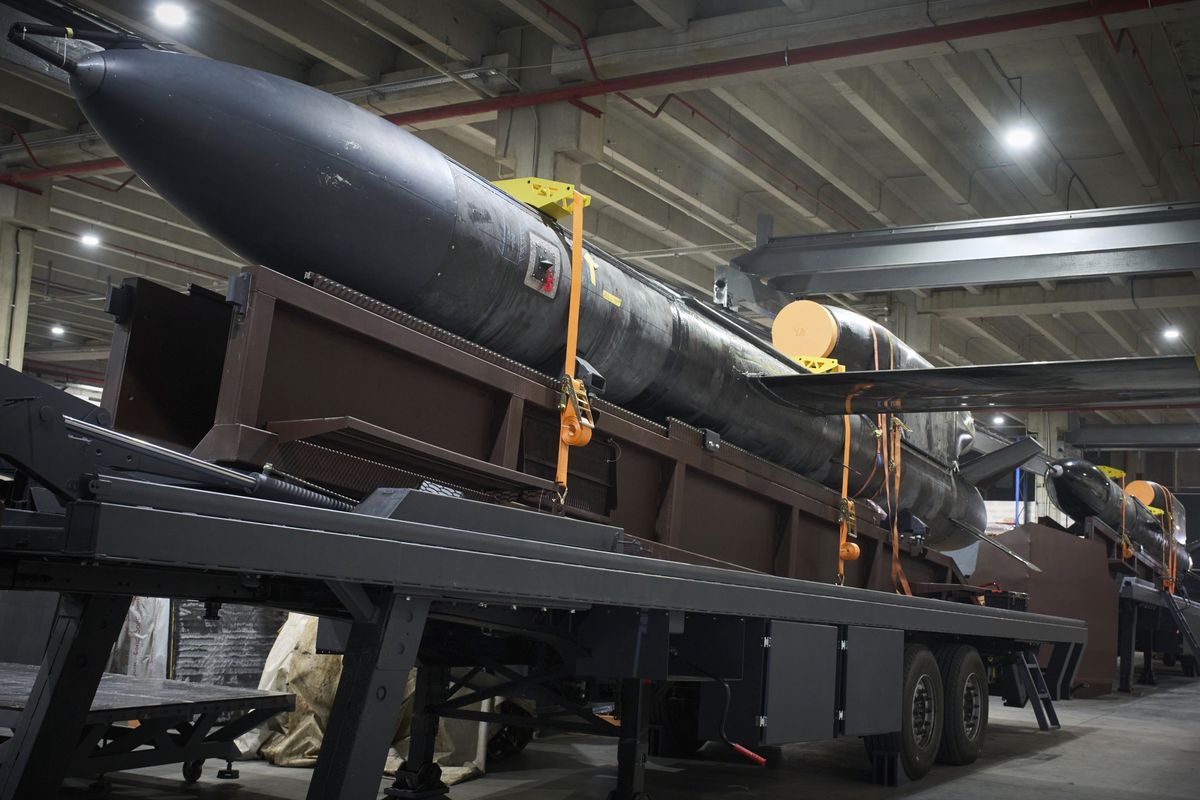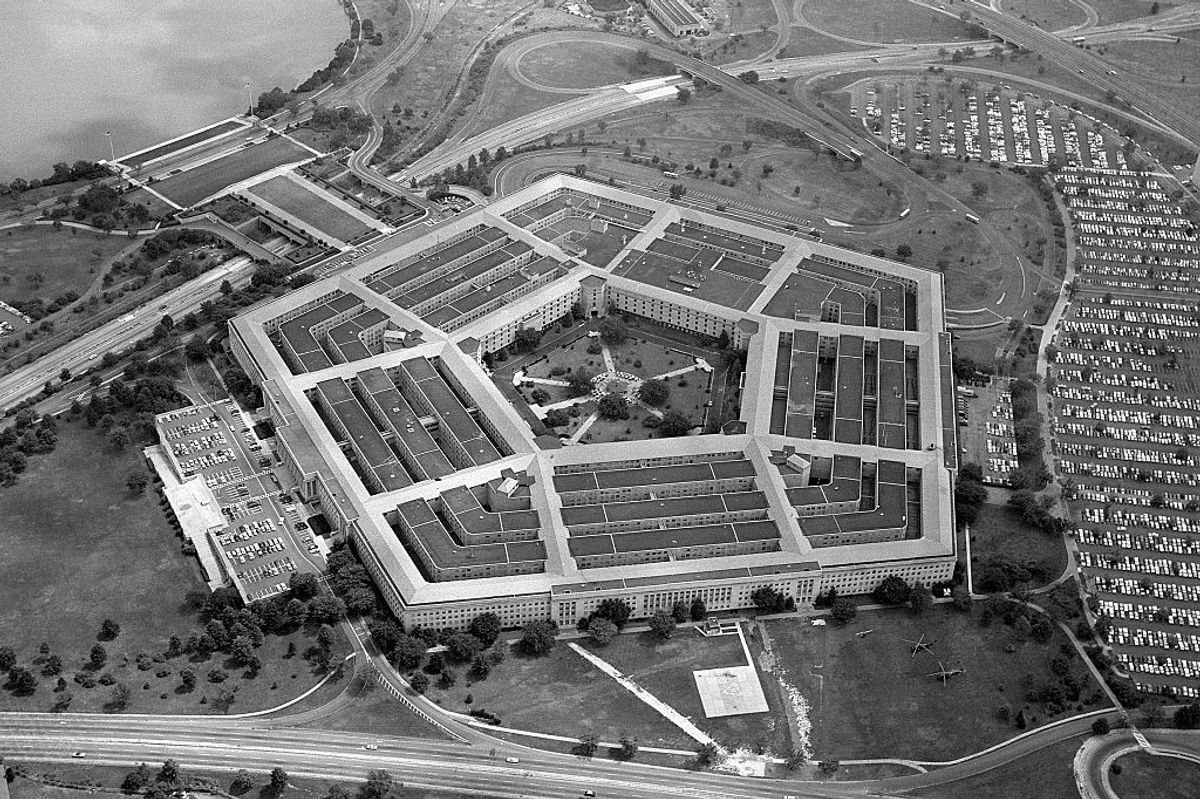SUBSCRIBER+ EXCLUSIVE ANALYSIS — Ukraine continues to strike Russian military targets in occupied Crimea, an area that has seen the most dynamic fighting in the war, most dramatically, in the retreat of Russia's Black Sea Fleet.
A primary method Ukraine has used to target Russian naval assets in the region was captured in a black-and-white video, shot with what appears to be thermal imaging showing a speed boat approaching the Russian Navy warship “Ivanovets” in the Black Sea. The small vessel lurches over the waves, and within seconds, slams into the Russian ship.
Footage taken from other speedboats shows a closeup of the gash that the first craft tore in the Ivanovets’ hull; other speedboats then appear to hit the Ivanovets before a series of explosions fill the screen. Finally, the bow of the 56-meter (184-foot) ship rises awkwardly before sinking, Titanic-like, into the sea.
The Ukrainian boats were unmanned. Put differently, they were maritime drones.
Ukraine lost its own navy when Russia seized Crimea in 2014, but with the aid of naval drones, the Ukrainians have sunk about a third of Russia’s Black Sea fleet, driving the fleet from its home in Sevastopol, Crimea, and effectively fencing the remains of the Russian fleet into a relatively small area on the eastern edge of the Black Sea.
“If the Russian invasion of Ukraine has shown us anything,” said Philip Stratmann, a former German naval officer whose firm Ocean Power Technologies supplies sea drones to the U.S. Navy, “it’s that one of the largest militaries in the world couldn’t overcome a small force using drones in the onshore space. And in the naval space, how do you protect your naval assets if you’ve got a $100,000 sea drone taking out a billion-dollar Black Sea flagship?”
Source: Ukraine's Military Intelligence Directorate
Lessons for the U.S.
That Ukraine, a country without a navy, neutralized one of the world’s largest fleets, is a lesson that is changing the face of naval warfare. In April, the American chief of naval operations, Adm. Lisa Franchetti, issued a manifesto for the U.S. Navy, and singled out drone warfare as a key component.
“Our adversaries have designed their militaries to overcome our traditional sources of strength,” Adm. Franchetti wrote, adding that the U.S. “must move rapidly to stay ahead” and combine conventional naval forces with “hybrid, unmanned and disruptive technologies.”
“You have Ukraine increasingly using, basically, modified jet skis that operate remotely, and you can have bombs on them and then smash them into ships and blow stuff up,” Zachary Kallenborn, a drone warfare expert with the Center for Strategic and International Studies said in an interview with The Cipher Brief. “These affordable drones have allowed them to cause significant harm against a number of Russian ships.”
The Cipher Brief Threat Conference is happening October 5-8 in Sea Island, GA. The world's leading minds on national security from both the public and private sectors will be there. Will you? Apply for a seat at the table today.
Last August, the Navy announced Project Replicator, an effort aimed at deploying thousands of sea drones – or uncrewed surface vessels and uncrewed underwater vessels, as the Navy prefers to call them – by the middle of next year, to counter China’s growing threat. And while the project is small in comparison to the Navy’s overall budget ($172 million for sea drones in an overall budget of $63 billion), it marks a sea change in how the U.S. expects to fight and position itself in maritime warfare.
Precisely how drones will change the way ships and nations fight at sea remains an open question. Analysts and former naval officers see drones doing everything from Ukrainian-style swarm attacks to intelligence-gathering, reconnaissance and surveillance, de-mining, and on occasion, simply confusing the enemy’s fleet or shore defenses.
That variety of tasks is mirrored by the differences in the new drones themselves. Some of the drones the Navy has commissioned resemble Boston Whalers. One variant looks like a giant mechanical manta ray, others like miniature submarines, and some might be mistaken for surfboards with sails.
Ocean Power, Stratmann’s company, builds 8-foot to 22-foot catamaran drones used by the U.S. Navy for tasks ranging from surveillance to demining.
Long history, new missions
The notion of unmanned vessels changing the way ships fight at sea has been around for a long time, said Scott Savitz, a specialist in naval drones at RAND. “This is not a new tactic or mission,” Savitz told The Cipher Brief. “For centuries people have been using old ships that were set afire and deliberately allowed to drift into enemy lines.”
But Ukraine’s use of sea drones has had a “tremendous impact” on naval tactics, Savitz said. No longer do admirals have to maneuver large fleets or flotillas of submarines into position to destroy or deter an adversary’s navy. Sea drones have become a logistically simple force multiplier, he said, and Ukraine’s achievements are a textbook example.
“Given how inexpensive these are, large numbers can be used, and you can lose most of them, but if a couple hit, that can have devastating consequences,” Savitz said.
“It’s the same problem we’ve been facing in the Straits of Hormuz for decades with speedboats. It just adds more dimensions to keep track of,” Bradley Martin, a retired U.S. Navy warship commander and now a senior policy researcher at RAND, said in an interview with The Cipher Brief. “It’s not game-changing, but scenario-changing.”
Martin says he believes the Navy can and will adapt quickly to using sea drones, and one of the best uses he sees is a “multi-axis deployment” with drones in the air, on the water, and underwater, coming at an enemy from all sides, creating a lot of confusing messages and targeting challenges for an enemy’s command system. “Presenting that,” Martin said, “is going to be a major deterrent.”
Already, the Pentagon’s effort to move quickly to adapt civilian technology is paying off with a variety of new drones that the Navy says are both powerful sea weapons and “attritable assets” – as in, disposable in ways that crewed naval vessels are not. In May, the U.S. Navy formally unveiled the unglamorously-named Unmanned Surface Vessel Squadron Three at San Diego – a fleet of small surface drones that include speedboats that look like Boston Whalers with covered hulls and cameras.
Earlier this year, the Manta Ray drone, developed by Northrup Grumman, successfully completed its first sea tests. The Manta Ray, 30 feet long, with a wingspan of about 45 feet, can be packed into a couple of shipping containers and assembled wherever it’s needed. Using hydraulics to empty and fill buoyancy tanks, the Manta Ray moves mainly by gliding up and down in the water. It’s part of a new class of long-duration, long-range, payload-capable drones that can loiter at sea or patrol for weeks at a time.
Maritime drones will also help mitigate against one of the biggest challenges for navies – mines, the ultimate “set and forget” weapon. Mines are easy to lay, hard to detect, and dangerous to deactivate. That’s made minesweeping and removal a major objective of marine drone makers. And of course, if a drone detonates a sea mine, there is no loss of life – only the loss of the machine in question.
Some things won’t change
Drones won’t end the need for a traditional fleet of aircraft carriers and cruisers, says Stratmann, for everything from force projection to keeping sea lanes open. “There’s something very emotionally powerful about having a carrier strike force turn up somewhere,” he said.
As Savitz notes, “The U.S. Navy has very different needs from Taiwan and Ukraine, because of our need for global power projection, and the need to be able to function after transiting the oceans.” In other words, drones cannot substitute for naval power.
There are of course also things big ships can do that drones cannot. China uses its Coast Guard ships to ram other vessels in the South China Sea, a case where drones aren’t much help in responding.
“We need to make a distinction between competition in the grey zone and full-scale warfare,” said Savitz. “Drones’ usefulness as attack vessels is limited until shots are meant to be fired.”
But he also said that drones may ultimately play a role in keeping China at bay and Taiwan safe from invasion. “If you’re China and you want to have the option of launching a massive invasion fleet against Taiwan, and intimidate other neighbors like Vietnam and the Philippines, you would be concerned if someone can jeopardize your fleet with a new type of weapon,” said Savitz.
“I look back at the photos from D-Day where you have all these open-air ships and I imagine, what if you’d had a drone flying over that,” Kallenborn said.
Even as the Navy remains wedded to design-and-build cycles that can last for decades, Stratmann says that from his small-business perspective, he sees signs that small sea drones may quickly become a significant part of U.S. naval operations. “You can scale up alternative technology production very rapidly, because it doesn’t require 10,000 people to build, it doesn’t require investing hundreds of millions of dollars in [a shipyard].”
The challenge, RAND’s Martin said, has more to do with changing decades of institutional thinking in the Navy to adapt to the new technologies.
“There’s still a tendency to think that an unmanned system looks like a manned system,” he said, “just without people on it.”
Who’s Reading this? More than 500K of the most influential national security experts in the world. Need full access to what the Experts are reading?
Read more expert-driven national security insights, perspective and analysis in The Cipher Brief because National Security is Everyone’s Business.











